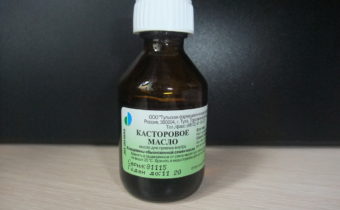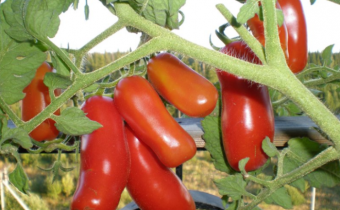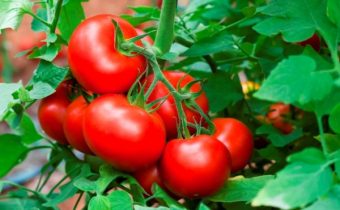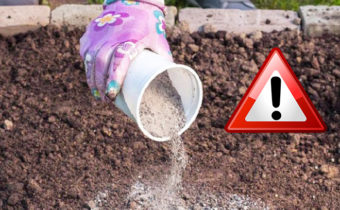Why leaves and leaves of feminine happiness turn yellow and dry (Spathiphyllum)
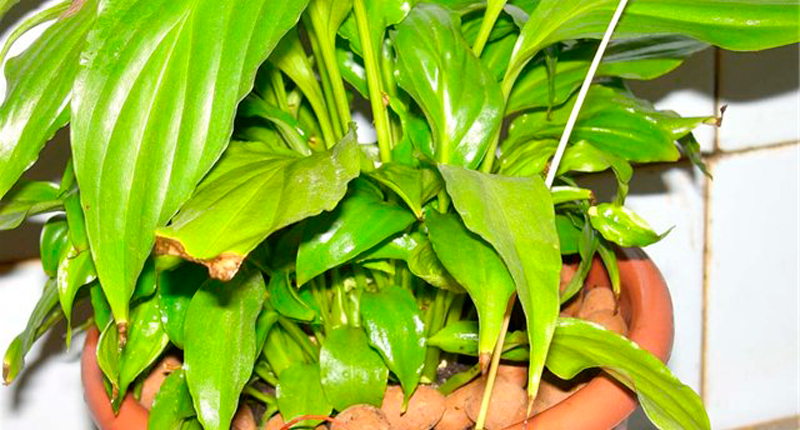
Spathiphyllum, or Female Happiness - It is an excellent representative of the family of Aroids, come from tropical edges. Its owners often face the problem of yellowing and drying of the leaves.
Improper care
The most common cause of loss of decoration becomes improperly organized care. The flower reacts to unacceptable environmental conditions by changing leaf plates.
Lighting
The pot is recommended to put on the western or eastern window sills. On the southern side, the leaves will “burn” in direct sunlight, and on the northern side the plant will experience a deficit of light and dry up.
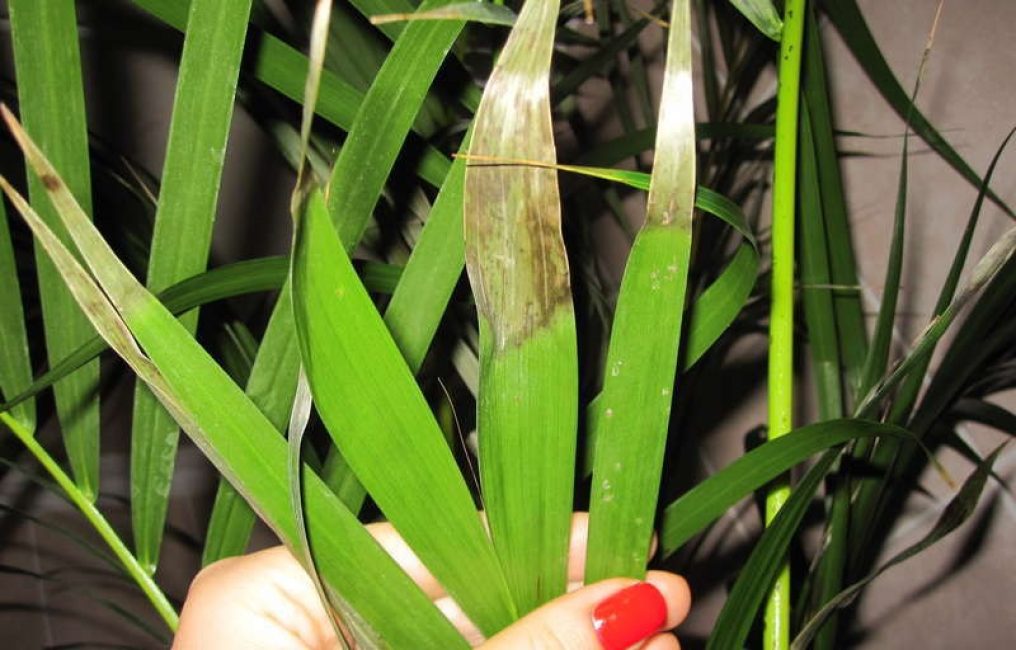
Dry air
Spathiphyllum is a tropical flower. Therefore, for normal life, he needs to create conditions of high humidity. To do this, the leaves are systematically sprayed.
Watering
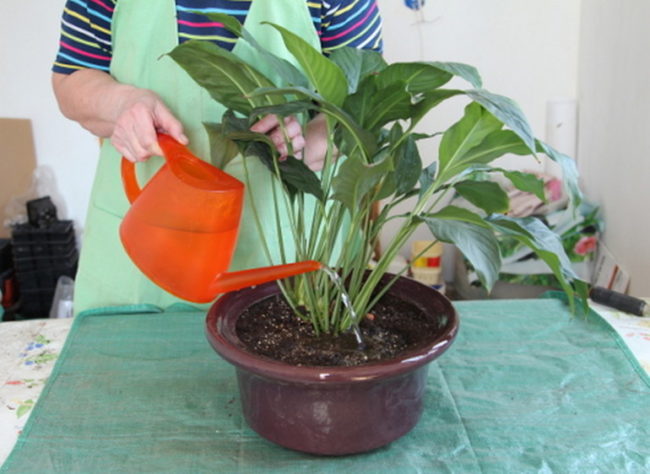
Can not be used for irrigation cold water. From this leaves not only dry, but also massively fall off. Moisten the soil in the pot as needed - after the complete drying of its upper layer.
Temperature
Spathiphyllum is afraid of the cold. The ideal temperature conditions for its content is the range from 17 to 30. Otherwise, the leaf plates will wrinkle, then shrink and fall off.
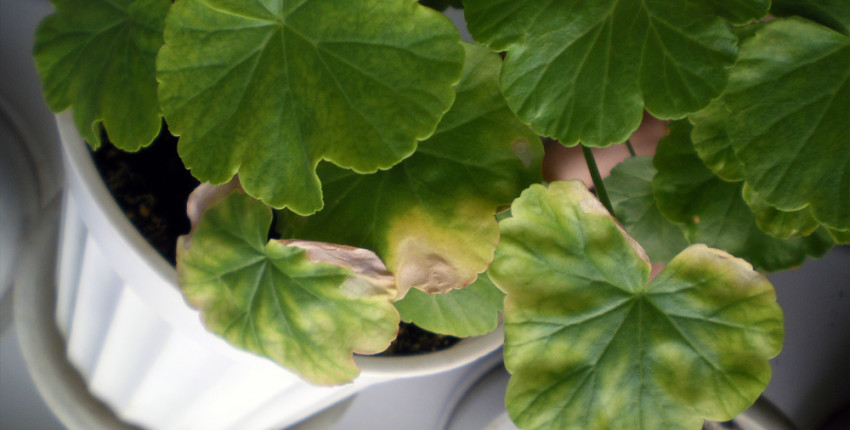
Top dressing
Drying and yellowing of the leaves is observed with the wrong introduction of the feed. Moreover, Spathiphyllum will react in a similar way both to the deficiency of mineral substances, and to their excess.
Pot
Incorrectly chosen capacity is also a decisive factor. In a close pot, the roots fit snugly together. As a result, the plant receives less nutrients and is oxygen deprived.
Too spacious pot leads to a rapid growth of the root system to the detriment of the green mass.
The soil
The main requirements of Spathiphyllum to the soil - is friability and nutritiveness. In a heavy, poor substrate, the plant will stall or wither. Also, do not forget about the need to timely replace the old soil with fresh soil.
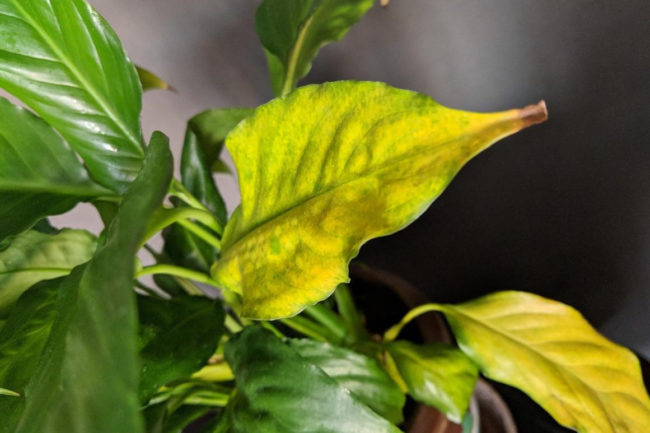
Pest Control and Treatment
Pests not only spoil the aesthetic appearance of the plant, but can also carry dangerous diseases. Most often Spathiphyllum suffers from such harmful insects:
- aphid;
- whitefly;
- spider mite;
- mealybug.
The best tool against insect pests is an insecticidal drug. But in the case of non-mass infection, you can try to save the flower by folk methods.
The best way to do this is to treat the plant with a concentrated solution of soap. But in a situation with an adult Spathiphyllum it will not be easy to do. Leaves tight to each other will not allow to process the entire bush. In addition, the whitefly soap is not afraid.
It is considered more effective to treat tincture of onion peel or garlic water. You can also try to save the plant from adversity with broths of celandine, mint, valerian.
Pruning and prevention of yellowing
Very useful for the plant will be pruning old yellowed leaves and already faded flowers, as they take energy from the plant. To do this, disinfect the pruner or knife with alcohol or a solution of potassium permanganate and cut off the spoiled leaves. It helps to update the plant and stimulate further flowering.
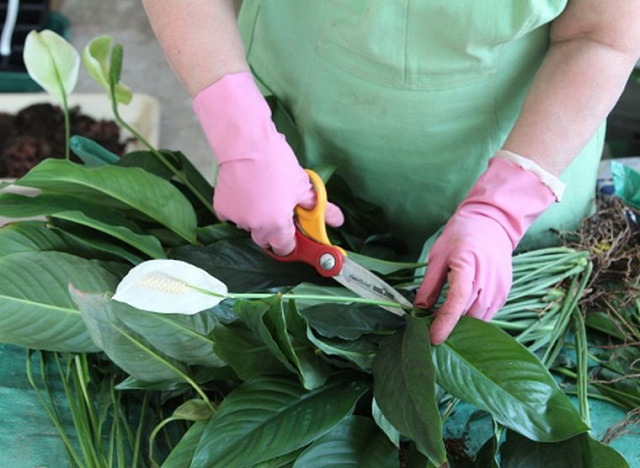
The best prevention is the proper care of the plant. There are a number of tips for the care of flower leaves:
- Barely acquired plant should not be immediately put to other floral neighbors. It is recommended to hold it in quarantine for about a month.
- Timely leaf hygiene is the basis of plant health.
- Periodically, you should inspect the flower for infection by pests and diseases.
- The irrigation procedure should be strictly controlled. This also applies to the frequency of moisture, and the amount of moisture, and the quality of irrigation water.
- The flower grows well in diffused light. Scorching sun and shade are not suitable for Spathiphyllum.
- The plant needs systematic fertilizer. But during the rest period it cannot be stimulated.
- For successful cultivation, it is necessary to create optimal conditions for temperature (about 23) and air humidity (at least 50%).
It should not be forgotten that root rot can be the cause of yellowing. When transplanting must carefully inspect the roots.
Yellow dry leaves - most often the result of improper care. Subject to all recommendations on growing the flower will delight with its beauty for many years.


